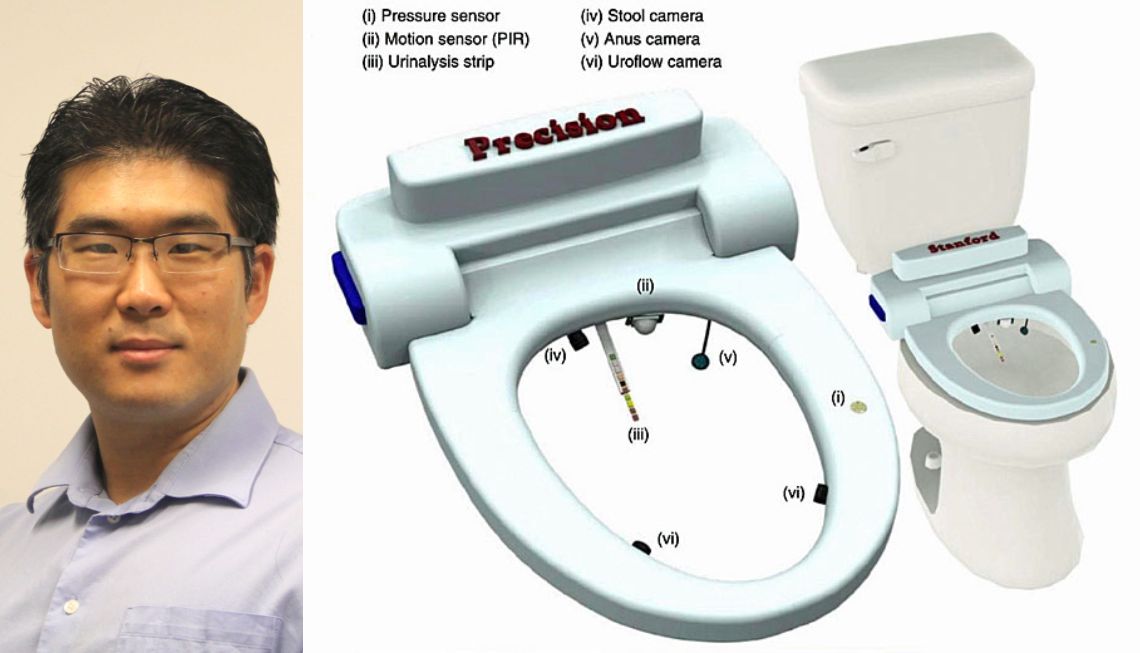Smart toilets: a less invasive alternative to disease detection
By Jaz Low
Interview with Park Seung-min, Instructor in the Department of Urology at Stanford University School of Medicine, United States.

The answer to this question may lie in a smart toilet, which is a less invasive way of detecting Covid. It analyses urine and stool samples to generate personalised health reports. Currently, the smart toilet is in pilot mode but there are plans to officially launch it by the end of 2022.
Park Seung-min, Instructor in the Department of Urology at Stanford University School of Medicine and inventor of the smart toilet, shares how his creation works and what it represents for the future of disease detection.
Covid-19 detection
The smart toilet identifies diseases such as Covid-19 by analysing a person’s urine and stool samples. Temperature, oxygen levels, and stool consistency are all helpful factors for detecting the virus, Park wrote.
For smart toilets that are going to be installed in public places such as shopping malls or hospitals, people can scan the QR code on the toilet door to fill in their particulars. They will then receive their results over text or email in 30 minutes.
Those who choose to maintain their privacy may not receive their results. But the smart toilet forwards these anonymised findings to Park’s team to aid their research. “This ensures some degree of data protection for those who are concerned about infringement of privacy,” he says.
People can also place these smart toilets in their homes to keep more intimate tabs on their health. Park hopes for the smart toilet to replace all toilets, so people can pick up on diseases that typically go under the radar.
Inspiration behind the smart toilet and key advantages
Park was inspired to develop the smart toilet because he read about how China was using rectal swabs for Covid-19 detection in newborns.
“We found that a significant portion of patients’ fecal matter contained RNA, which carries the genetic material in viruses,” he shares. This confirms the presence of Covid-19 and proves that analysis of excreta is a viable method for disease detection.
The smart toilet is less invasive than an anal swab but can yield the same results, Park notes.
The toilet will also be able to provide a more accurate picture of the true infection rate of a population, he wrote. Around 60 per cent of cases in the US go unreported, according to Bloomberg.
Another advantage of the smart toilet is that it can incorporate diagnosis into our daily lives, he says. No human being can avoid urination or defecation, and the smart toilet is tapping into this unexplored territory to give people helpful information about their health.
Detection of Irritable Bowel Syndrome and other diseases
Aside from Covid, the smart toilet will also be able to detect other diseases like Irritable Bowel Syndrome (IBS) in the upcoming first pilot. IBS is a chronic large intestine disorder that affects ten per cent of the population, Park shares. Common symptoms of IBS include diarrhoea or constipation, or both.
The smart toilet will track biomarkers such as stool frequency, stool consistency, and defecation time to monitor IBS. This is helpful because “the exact cause of IBS is not really known and is more dependent on a person’s mood or stress level,” Park says. The smart toilet will be able to determine the symptoms of IBS early and encourage users to seek treatment or adjust lifestyles.
The smart toilet will also be able to tell when someone is suffering from sleep apnea based on the frequency of urination and the time of day a person urinates. It can map out infectious skin diseases such as genital warts through image analysis as well, Park wrote.
Park’s team plans to launch the first pilot of the smart toilet by the end of 2022 once they have secured sufficient funding. Beyond these functions, they hope to track dehydration, diabetes, and colon cancer among other ailments in future phases of the smart toilet.
Exciting projects that involve the smart toilet
In the meantime, several agencies have already approached him to contract the smart toilet.
For instance, NASA has approached Park for a potential collaboration in its spacecrafts. The smart toilet will be able to autonomously screen the crew for diseases even if they are millions of kilometres away.
“It takes an average of two years to travel from Earth to Mars, so maintaining the crew’s health throughout this time is a priority,” he says.
NEOM, an upcoming smart city in Saudi Arabia, has also reached out to Park’s team to station the toilet in thousands of residential homes. The passive monitoring system will alert people to any diseases they have so they can treat them as soon as possible.
Ethical and privacy considerations
While the smart toilet has many potential benefits, there are ethical considerations it will have to tackle.
For example, the smart toilet is capable of detecting street drug use. “If a teenager has been found to consume drugs, should the smart toilet report this to their parents? In countries where drug abuse is a significant crime, should the smart toilet report this to the authorities?” Park poses.
The smart toilet will have to navigate these boundaries of information sharing. “We're trying to prepare the smart toilet to face as many of these scenarios as possible,” Park says. He is working with Stanford University’s bioethics research team to write a paper on the ethical considerations of passive monitoring.
The smart toilet can sense multiple signs of illness through automated urine and stool analysis, but there are also many hidden parameters its developers will have to consider. It has the potential to make disease detection less intrusive for millions around the world, but this project requires more fiscal support before it can realise its true potential.